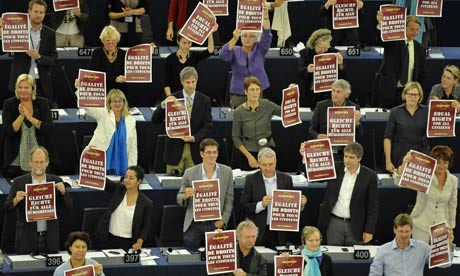
1. The TERNO Project
2. Objectives
3. Outputs
4. Impact
5. Target Groups
6. Work Programme
- WP1: Management and Coordination
- WP2: Initial Research and Methodology
- WP3: Training Workshops for Teachers
- WP4: Centers of Supplementary Education for Roma Children
- WP5: Meetings with parents of Roma Children
- WP6: Quality Assurance and Evaluation
- WP7: Dissemination
- WP8: Exploitation of Results
5. Symeou & Kafa Presentation-1.pptx
Thanks to the initiative of our partner IDEA ROM, the projects Sedrin and Terno have obtained the patronage of theItalian Minister for Integration Cècile Kashetu Kyenge . Below you can reed the full letter.

For a number of reasons Roma children constitute an especially vulnerable group among migrant and minority students in Europe. In accounting for their educational difficulties, it is important to consider the complexity of their problems, including the various components of low socio-economic status and cultural marginalization, constantly reinforced by ethnic prejudices and discrimination.

In 27,28,29 of June 2013 was held the second Meeting for the Terno Project. In the first day in Jakobinus hall, MTA Institute of Sociology we discussed about the Research of the project:Attending the educational needs of Roma children(Comparative analysis) prepared by Róza Vajda and the Institute for Sociological Resarch, Hungarian Academy of Sciences where you can read here and we reviewed the work programme from the Meeting in Athens. Finally each partner made a Presentation of the Progress in Each country (schools selected, teachers identified, administrative preparations, children target groups,dissemination etc.). The following days we moved to the beautiful Roma Parliament where it was held the Teacher’s training: Psychological tools and pedagogical methods supporting the education of Roma children . The basic guidelines of the Training you can also find here.

In December of 2012, the partners had the first Meeting in Athens.
The purpose of our Meeting was to meet each other, to schedule the work, clarify our tasks and organize the activities of our activities.

This project is co-funded by the European Commission. This publication reflects the views of the author only and the Commission cannot be held responsible for any use of the information contained therein.
![]()